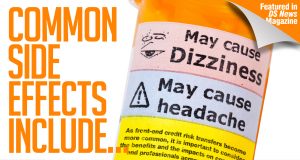So far, 2017 is looking up‒‒or, rather, down‒‒when it comes to foreclosures and distressed properties. But will downward trends continue?
Read More »First-time Buyers Account for 60 Percent of Purchases
According to a new report, first-time homebuyers now make up 60 percent of all home purchases. On GSE loans, first-time buyers comprise 47 percent of loans, while on FHA loans, they account for 82 percent. The uptick is likely due to an improved economy, lower unemployment, rising income, and more new home construction
Read More »International Document Services Receives Certification from GSEs
After undergoing an extensive testing process, a mortgage document preparation vendor announced its Uniform Closing Dataset XML file has been certified by the GSEs. This new way of submitting documents will be required by Fannie and Freddie starting in the fall for all lenders selling to them. The company trusts this will bring consistency, transparency and clarity to the mortgage industry.
Read More »Side Effects Include…
Credit risk transfer (CRT) or sharing is the process in which the government-sponsored enterprises bundle up the mortgages they buy from lenders and sell a portion of the risk to private investors. Instead of the GSEs shouldering the loan risk alone, selected investors help offset any potential risk from loan defaults. CRT began as a test in 2012 and is now quickly ramping up as investor interest and governmental oversight grows. Governmental oversight makes sense—we don’t want another 2007. But why are more investors becoming so interested in CRT?
Read More »Blame it on Refis
According to new analysis of GSE loan performance data, refinances may be, in large part, to blame for the housing crisis. An uptick in “using homes as ATMs” lead to sloppier underwriting and an uptick in defaults on refis leading up to the collapse. Refis were significantly more likely to be seriously delinquent than purchase loans during this time.
Read More »Foreclosure Activity Down Across the Board
According to a new report, serious delinquencies, short sales, deeds-in-lieu, third-party sales, and foreclosure sales were all down for the month. Earlier-stage delinquencies were up in February, however, with loans 30 to 59 days delinquent rising from 377,000 to 404,000 for the month. Of February loan modifications, 19 percent had principal forbearance, while extend-term modifications accounted for 44 percent—something the report attributes to ever-climbing housing prices.
Read More »Fannie Mae Income Drops in Q1
Fannie Mae reported $2.8 billion both net and comprehensive income for the quarter, the exact amount of the dividend amount it expect to pay the Treasury Department in June. But that income for the quarter was nearly half what the GSE reported in Q4 of 2016.
Read More »Freddie Portfolio Grows, Delinquency Rates Down
Freddie Mac’s total mortgage portfolio grew 4.8 percent from March 2016 to March 2017, according to recent data. The GSE has handled $98 billion in purchase and refinance loans this year to date. Serious delinquencies were down on Freddie single-family loans but stayed steady for multi-family ones.
Read More »GSEs Expand Credit Box, Take More Lending Risk
A new index shows the GSEs are expanding their credit boxes and taking more risk, making it easier for consumers to get a mortgage loan. Government, portfolio, and private-label security channels are not expanding the box, however, and are actually decreasing the amount of risk they take in lending. Though overall mortgage credit availability is largely stable, there is still much room to expand the credit box—particularly in these more stringent markets.
Read More »GSEs Complete 15K in Foreclosure Prevention Actions
An FHFA report reveals the GSEs completed nearly 15,000 foreclosure prevention actions in January, bringing their total to 3.8 million since the beginning of conservatorship. The report also revealed that GSE foreclosure starts jumped 10 percent for the month, while third-party and foreclosure sales increased 16 percent. The seriously delinquent rate stayed steady, while delinquent loans 30 to 59 days and 60-plus days both dipped.
Read More »
 DSNews The homepage of the servicing industry
DSNews The homepage of the servicing industry








